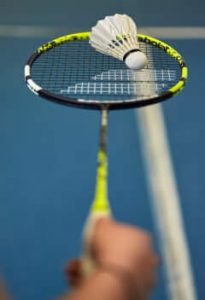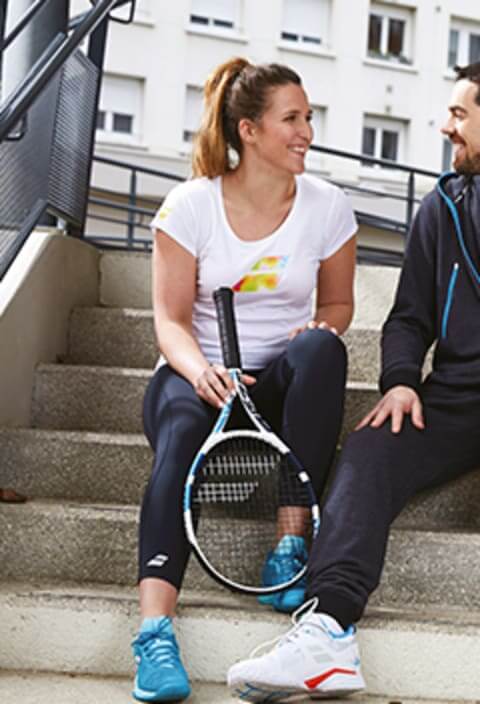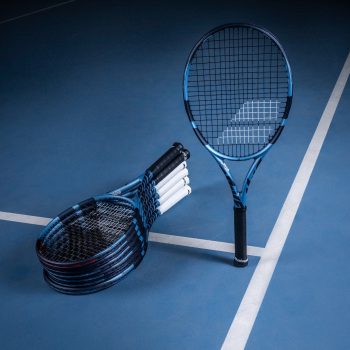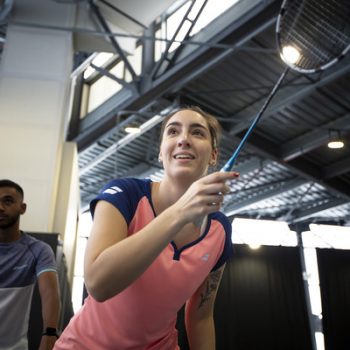“Có rất nhiều thước đo cho môn cầu lông, đó là điều đã thu hút tôi” – Peter Mills
His eye moves quicker than the fastest train. And it could be valuable if yours were to do so too. It would then move faster than a Formula One racing car, faster than the Shanghai Maglev train, faster even than a peregrine falcon which dives at 300 miles an hour.
A good badminton player should, says Peter Mills, manage to track a shuttlecock moving as quickly as this. It would mean following the fastest moving object in any sport.
Mills knows plenty about this. He was a successful player for England, then a high-level coach, and now the UK sales manager for Babolat. Three major roles, three troves of experience.
“The eye – it’s another part of training,” he says. “The more practice it gets, the more it develops a natural reaction.”
Training reaction times
This is crucial for those impossible-looking defences against the fearsome smashing which electrifies the professional game; also for instinctive reactions during rat-a-tat blurs in mid-court rallies where players refuse to block the shuttle upwards.
Offering some encouragement, Peter adds, “Some reaction times can be trained, so there’s more chance of developing returns for these kinds of shots.”
At other moments rallies develop through flicked lifts and high clears, when a shuttle may move with varying speeds, and include net shots where its movements are deceptively languid. Countering all these situations requires perception, versatility, and sometimes a silken touch.
Badminton’s technical kaleidoscope
Badminton’s technical kaleidoscope is wonderfully unique. “There was something about the skill and the tactics of the game I really enjoyed,” Peter recalls. “Just picking up a racquet combined everything I needed – skill and tactics and physicality. It was very creative. There are so many dimensions, and that’s what attracted me.”
The small, wide-eyed, eight-year-old Peter would trot hopefully into the Southwell club near Nottingham where his mother and sister played. Less than a decade later he was playing for his country. Soon afterwards he was travelling the world, becoming a top 20 doubles player, before winning medals at the 2014 Commonwealth Games in Glasgow.
Those successes were a wonderful highlight. Almost 5,000 athletes from six continents and 70 nations took part in a sporting festival. “The standout Games in the history of the movement,” its chief executive Mike Hooper claimed.
The medals which Peter Mills and Chris Langridge won in the Chris Hoy Stadium that memorable summer contributed to an England multi-sport performance which put it top of the medals table for the first time in 30 years.
The importance of partnerships
Mills liked partnerships, and had three good ones in men’s doubles – with Langridge, Chris Adcock, and Marcus Ellis. He now has a fourth, in trade and marketing, with Babolat.
This is potentially Peter Mills’s most famous partnership of all. Back in the burgeoning industrial revolution of France’s third republic, Pierre Babolat processed natural gut for sausages and musical instruments, before discovering an unexpected use for it as strings in rackets. He was the first person to do so.
These days, while the record-breaking Rafael Nadal flies the flag for Babolat’s tennis products, in badminton it’s an under-rated brand, Peter claims. There is much to live up to, for badminton is arguably one of the world’s two most popular active sports with 220 million players.
“There is an opportunity to grow, and I wouldn’t take this job for brands I didn’t play with,” he says. “It’s a good to be able to say I played with this brand.”
Who were the best players he ever competed against? Without doubt, he reckons, Cai Yun and Fu Haifeng, the Chinese partnership which won four world men’s doubles titles and the London Olympics. “It was so hard ever to find a weakness,” he says.
But the player illustrating how massively badminton has changed, he believes, is Lin Dan, Olympic men’s singles champion in both London and Beijing. “Players are not just players anymore,” he asserts. “They are athletes.
“Every side of the game is explored – fitness, strength, aerobics, psychology, diet. The game is speed and power. Everyone covers more (court) quicker and quicker now. Everything is taking a step forward.”
Which, in his latest incarnation, is what Peter Mills is attempting too.
Bài viết này hữu ích với bạn?







